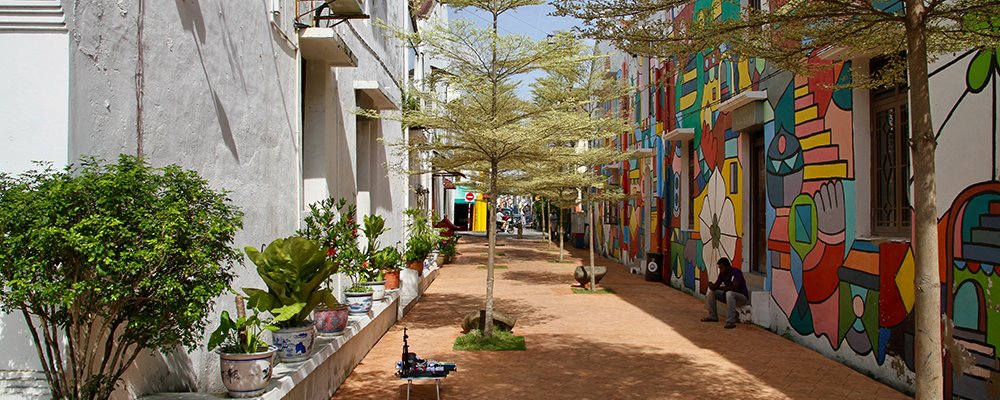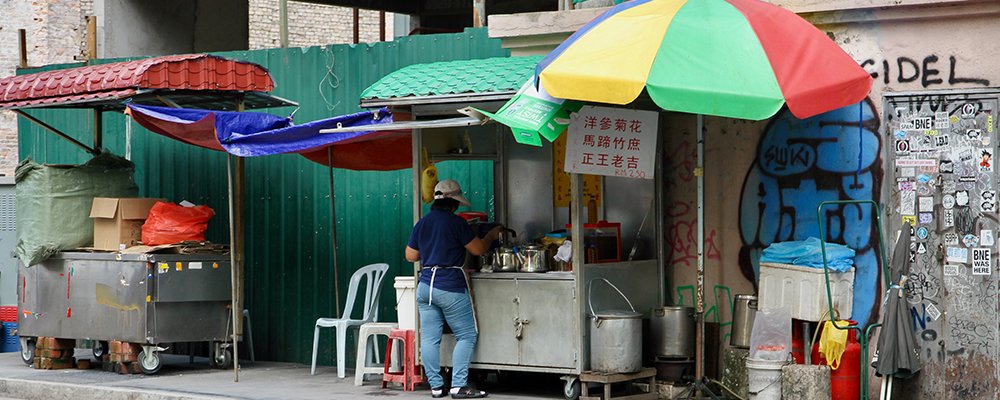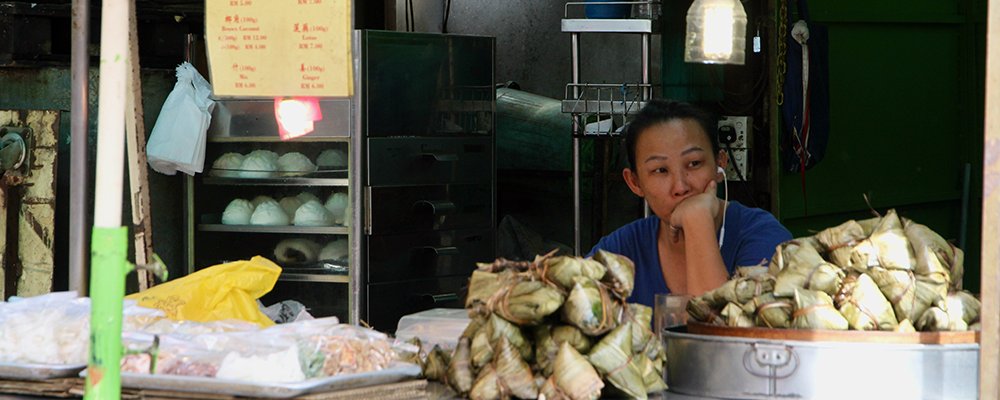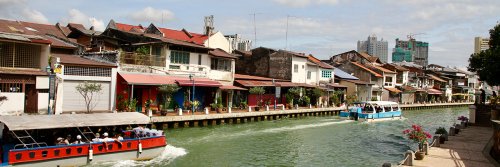The historic port city of Malacca (aka Melaka) sits on the coast of southwestern Malaysia, a few hours from Kuala Lumpur. A UNESCO World Heritage Site, Malacca is a hodge-podge of culture and architecture blended from the Dutch, Portuguese, British, and Peranakan (Straits-born Chinese). Narrow one-way streets are lined with old shophouses, traditional tea shops, funky art galleries, and pastel-painted homes that have become accommodation houses. The city is famous for its foodie culture—savor traditional Chinese dim sum for breakfast and tempt your taste buds with a selection of 'Nyonya' cuisine, a hybrid of Malaysian and Chinese, for lunch. At dinner, wrap your lips around some Pakistani tandoori. It's a rainbow of cuisines on offer.


Nyonya food is a hybrid born from the melting pot of Chinese migrant descendants who spread out into Malacca, marrying Malaysian locals during the 15th and 16th centuries. Nyonya is the name given to this mix of Chinese-Malay cooking—the wok of the Chinese with Malaysian ingredients; Vietnamese coriander, candlenut, fermented shrimp paste, coconut milk, fused with the spices of India and the Middle East, and indigenous vegetables from Java (black mangrove tree nuts and water spinach) creating a taste sensation at once spicy, salty, sweet and sour, the basis of Nyonya dishes.

To entice foodies more is to experience the lesser-known cuisine of 'Kristang'—created from the intermarriage of Malaccans and the Portuguese during the 16th and 17th centuries entwined with later nationalities from the Netherlands, India, and China, and throw in some British for good measure. Unlike the labor-intensive Nyonya food, Kristang cuisine is simple, using only the best and freshest ingredients that light up your mouth with spicy curries, fiery sambals, and a tanginess from tamarind. The best area to experience traditional Kristang dishes is the Portuguese Settlement known as Perkampungan Portugis.
When in Malacca, don't miss out on:
Devil’s curry
A Kristang staple appearing on tables at special occasions is curry Debal or Kari Debal. A fragrant and spicy meal with a tangy sharp taste—not creamy as most Malaysian curries, as it's cooked with vinegar—a concoction of meat (sometimes vegetables are added), and aromatics such as galangal, mustard seed, and candlenuts. Over the generations, this fiery dish has morphed from merely spicy to a tongue-lashing of heat with every deep red mouthful.
Chicken Rice Balls
Once the diet of dockworkers who would grab a rice ball on the run as they didn't have a lunch break, chicken rice balls may be the first grab-and-go food. The savory tale behind these simple yet mouthwatering creations is that a Malaysian woman was left to care for her children while her fisherman husband was wallowing in jail. She would trundle to the docks every morning with two containers swinging from each end of her shoulder pole. She soon realized that the laborers did not have time to sit and eat a meal of chicken and rice, so the chicken rice ball was invented. What makes chicken rice balls the duck's nuts is in the cooking method—the rice is cooked with chicken fat and stock.

Kueh Pie Tee
You will find this traditional Nyonya treat on most menus in Malacca as an entrée, or for sale at many street vendor carts. Affectionately nicknamed 'top hat' because of its shape—the thin tart does look like an upside-down top hat—kueh pie tee is a small fried pastry cup filled with a hot mixture of shredded vegetables (Chinese turnips, carrots, and maybe bamboo shoots), prawns and spices. Then, topping off this delectable crunchy mouthful, it's garnished with omelet strips, shrimp, and coriander leaves. No kueh pie tee is complete for consumption until it's doused in chili sauce.
Asam Pedas
Translated to 'sour spicy,' asam pedas is a soup that most locals eat with a side dish of white rice and another overflowing with fresh herbs. Of course, chili dip is a staple on the table as well. Scoffed down at lunch or dinner, the soup is comprised of seafood (think mackerel, redfish, herring), eggplant, tomato, long green beans, and a wealth of spices all bubbling away in a broth of asam (tamarind) juice, and fresh chili peppers.

Nyonya Laksa
Divinely aromatic and flavorful, Nyonya laksa, the region's signature spicy noodle soup, combines Malay and Chinese cuisines. You will find different versions throughout Indonesia, Singapore, and Malaysia. The telltale tale sign of Nyonya Laksa is its coconut broth, which tastes spicy, rich, and a little bit sweet with each mouthful. A 'Nyonya Laksa' has glistening blood cockles and cucumber on top with lashings of fresh goodies such as green veggies, fish cakes, and tofu. In comparison, a Singaporean laksa has a boiled egg and a gritty texture due to the use of dried prawns.
These are only a few dishes that make visiting Malacca a heavenly delight for your tastebuds. There are so many more dishes to dribble down your chin, choke on the chilies, or wear a foodie-moustache; Ayam Pongteh (chicken), Ikan Bakar Portugis (baked fish), Satay Celup (satay sticks with oodles of sauce), Char Siew Rice (pork), and Itek Tim (duck soup). If you can't understand what ingredients are in a dish, ask the server or google it on your mobile.
Gail Palethorpe, a self proclaimed Australian gypsy, is a freelance writer, photographer and eternal traveller. Check out her website Gail Palethorpe Photography and her Shutterstock profile.















